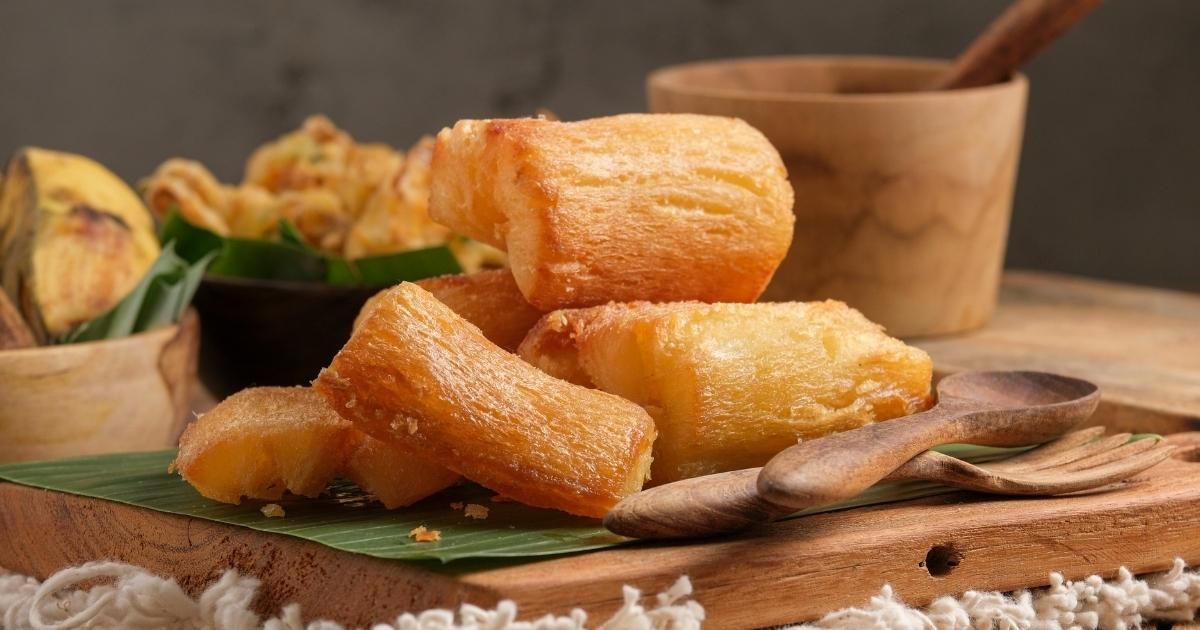Yuca Vs Yucca: What's The Difference?
Yuca or Yucca? Attractive but vastly different products share a similar name. Knowing how to use them pays off. Are yuca and yucca the same thing?
Concisely, the difference between yuca and yucca is this: One is a root veggie, and the other is a leafy plant. Still, both ingredients are versatile and delicious if you know what to do with them. Here’s what you need to know about yuca and yucca.
What’s The Difference Between Yuca and Yucca?
Although yuca and yucca are constantly confused, they are completely different. Yuca, also known as cassava or manioc, is a root vegetable. Yucca is a flowering plant. The root cannot be eaten.
So what exactly are Yuca and Yucca & how to use them? Here's all you need to know about these two ingredients.
What Is Cassava (Yuca)?
Yuca, also known as cassava and manioc, is a tuberous root that grows in warm tropical and subtropical climates. Countries in the Caribbean and South America are big fans of the root veggie, and although yuca looks like a sweet potato, it is unique.
When ground into a powder, yuca becomes tapioca flour, but you can also consume it as-is. Unlike every other root vegetable, yuca must be managed with care — you must boil it thoroughly to eliminate its toxic substances — eat raw yuca, and you can get cyanide poisoning! Of course, if cooked right, yuca is harmless. If you want to play it safe, the “sweet” yuca variety contains significantly fewer toxins than the “bitter” varieties.
Yuca is delicious. The starchy veggie is mildly flavored, but it has an unbeatable texture. The vegetable is 60% water and 38% carbohydrates — it’s no surprise yuca is a vital energy source in tropical countries worldwide. After sugarcane and beets, yuca contains more simple carbs, AKA sugars, than any other edible plant, root or veggie.
How To Use Yuca?
When ground into a fine flour, you can use cassava in countless cooking projects. Make pizza crusts or tortillas with it, use it to make gluten-free bread, or add it to your cookie dough. Yuca flour is one of the most prominent gluten-free alternatives, and thanks to its high carbohydrate and low protein content, it can substitute wheat flour in most sweet and savory recipes.
If consumed whole, you can dice yuca and add it to soups and broths, just as you would with potatoes. Speaking of potatoes, cassava fries are deliciously crunchy and light.
Of course, if you’ve never cooked with yuca, ensure it’s safe to eat. Peeling the root veggie, soaking it in water for a few hours, and boiling it is enough to make them safe to eat, but you can never do enough research regarding food safety.
Concisely, if whole, cassava is a wonderful substitute for potatoes. If ground into flour, use it as an alternative to wheat flour; it's as easy as that!
What Is Yucca?
Yucca is an evergreen plant with spiny leaves that grows in tropical countries. Yucca is native to America and is expected in the southern USA and Mexico. Interestingly, yucca grows in the same conditions ideal for cultivating cassava, so it’s no surprise someone in the past mistook one for the other, therefore the name's similarity.
Yuccas are attractive ornamental plants with edible seeds, roots, flowers, stems and fruit. Yucca roots, though, are not to be confused with cassava. The most consumed part of this tropical plant is its white flowers, not its roots. Many health benefits are associated with consuming yucca, but most people eat the flowers for their tender texture and mildly herbal flavor.
Even more interestingly, there are more than 40 species of yucca around the world, and every well-tended garden in temperate climates has a few of these beautiful plants. The plant's roots can be used to produce soap, and its fibrous leaves have been utilized to manufacture rope since ancient times! Isn't this a versatile plant? Yucca, of course, is still a little-known ingredient.
How To Use Yucca?
Yucca is the main ingredient in several dishes that can entice even the most sophisticated palates.
Yucca flowers are relatively common in Mexico, Central America, South America and the Caribbean. Cooking them Mexican-style by sautéing them with minced peppers, onion and tomato is not uncommon — this is a beautiful vegetarian taco filling.
Making egg patties with the flowers is also typical, and the dish can be pretty flavorful if the cakes are served with a hearty green or red sauce. Yucca flowers are an easy add-on for empanadas, pies, tarts and even pancakes, although they’re often used in savory dishes rather than sweets. If you want to cook with yucca flowers, think of them as zucchini blossoms or leafy greens. They can give color and flavor to omelets, quiches, stir-fries, noodles and much more.
Since yucca is considered a superfood with several health benefits, many people consume it in tablets and dietary supplements. Of course, this is a missed opportunity, considering the plant’s various culinary uses.
The Good News? You Don’t Have to Choose!
Yuca and yucca might have nothing in common, but both have many uses in the kitchen and are easy to add to your diet. Tasty and nutritious, you should try cooking with both ingredients. After all, the more variety you bring to your cooking, the better.
Enjoy yuca, yucca or both. Try new things! Most importantly, share your newfound knowledge of these two exotic ingredients and give your loved ones a taste of these lesser-known foods. The best part? Both ingredients are climbing the popularity ranks, so expect to see them everywhere soon.
Cuban Bunuelos
A simple fritter which is popular throughout the world and can be found in many variations. The popularisation of bunuelos is thanks to the versatility...




























